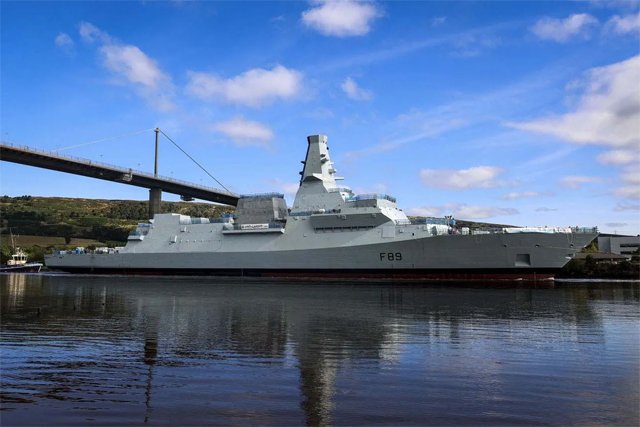There are now two of the Royal Navy’s next generation frigates in the water – briefly – as HMS Cardiff entered the Clyde for the first time.
Nearly five years to the day steel was first cut for the Type 26 submarine hunter, the ship was moved on to the largest barge of its type in Europe and left BAE Systems’ Govan yard for Loch Long and the MOD facility at Glen Mallan.
There, over several days, she was carefully lowered into the water for the first time in a delicate operation involving not just experts from BAE, but also the Royal Navy and the MOD’s Defence Equipment and Support, and safeguarded by Minister of Defence Police’s Clyde Marine Unit.
The last act of the float-off operation – spread over several days – was to tug the now afloat HMS Cardiff (the first in nearly 20 years when the Type 42 destroyer was in service) back up river to BAE’s Scotstoun facility, on the Clyde’s north bank.
There Cardiff – whose sponsor is opera singer Katherine Jenkins – joins the lead ship of the City class for outfitting, leading eventually to trials and ultimately joining the Fleet.
Shortly she’ll move for fitting out into dry dock – the same dock recently vacated by HMS Glasgow to accommodate Cardiff.
And there, like Glasgow before her, shipwrights, technicians, engineers and, when they join, ship’s company will install and commission the systems which will make the Type 26s the world’s foremost anti-submarine warships.
For now, the thousands of people who’ve toiled on Cardiff for the past five years are delighted – and proud – to see her depart Govan (she leaves the yard in a more complete state than her predecessor, weighing in at around 6,000 tonnes).

